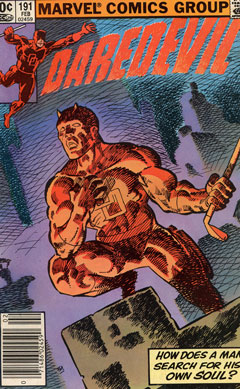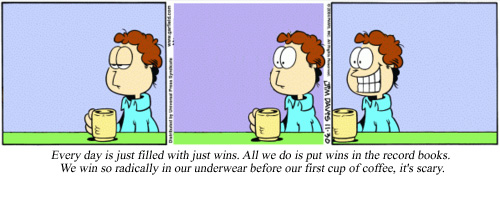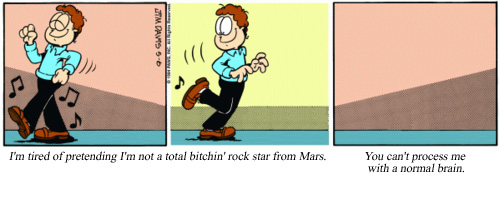Tag: comics
Graphic Novels and Narratives for Spring 2011
 I always find it difficult to select the texts for my graphic novel courses. Narrowing the choices for my Spring 2011 undergrad class bordered upon an existential crisis. Perhaps it’s because so much seems to be at stake when you’re likely introducing students for the first time in their lives to the critical study of a form that is mostly trivialized and occasionally demonized in our culture.
I always find it difficult to select the texts for my graphic novel courses. Narrowing the choices for my Spring 2011 undergrad class bordered upon an existential crisis. Perhaps it’s because so much seems to be at stake when you’re likely introducing students for the first time in their lives to the critical study of a form that is mostly trivialized and occasionally demonized in our culture.
I feel enormous pressure to get the syllabus just right.
But what is just right? There’s the usual tension between coverage and depth—am I providing a historical overview of the form or am I exploring a thematic or aesthetic subset of that form? But there’s also the tension between the canons of graphic narrative. Yes, canons, plural. I’m thinking in particular of the literary canon of Graphic Novels That Are Taught (e.g. Persepolis) versus the popular canon of Graphic Novels That Every Fan Reads (e.g. Sandman). There’s some overlap between these canons, but not much. Inevitably I’ll have students in my class disappointed because I’ve not included a major work on the syllabus—some text they expected to be there either because it’s predictably literary or it’s a fan favorite. Likewise, I’ll usually hear from some other teacher or scholar disappointed that I didn’t include his or her pet graphic novel on the syllabus, which, I will be assured at that point, is to graphic narrative what Moby-Dick is to the American novel.
To hell with that.
This time around the only criteria for the texts I’m teaching is that they’re texts I want to teach. And I want to teach them because in one way or another I think they’re teachable. Even when—especially when—they might be difficult or off-putting, I think they’re teachable.
And so, for the upcoming semester I decided to avoid several giants of the form. It will be the first time, for example, that I’ve left Watchmen off a graphic novel syllabus, and I am less ambivalent about this than I would have thought. As much as I admire Moore and Gibbons’ work, I don’t find it as teachable as I’d like—or as it deserves to be. More than the other groundbreaking works from 1986, Watchmen has lost some of its verve. I have, however, included the other touchstones of 1986—The Dark Knight Returns and Maus. The former because it gives us entry into Batman and into the comics industry as a whole, the latter because it remains powerful and haunting, even with the fourth or fifth reading. Alison Bechdel’s Fun Home is the only other work I’m including that has already become part of the graphic narrative canon. It’s smart and literary, arguably too smart and too literary, but those elements make Fun Home great teaching material.
Most of the other graphic novels are gambles, texts even fans of graphic novels will probably not have encountered. These range from Lynd Ward’s bold, wordless novel, told entirely in woodcuts, to Mike Carey’s ongoing series Unwritten, whose literary ambition only slowly unfolds throughout the first dozen or so issues. I’ve never taught Ward or Carey, and I have no idea how they’ll turn out. In between these two bookends are a few works that I have taught (Asterios Polyp and Nat Turner) and a few others I haven’t (We3 and Swallow Me Whole).
Looking over my final list, I’m surprised at how non-historical it is. Heavily emphasizing works published within the last five years, this course is decidedly not an overview of the form. No, it’s an overview of something else. In every case, I selected these works because I think they have something to teach us. About storytelling, about visual artistry, about the dynamic between the two. About history, about memory, about suffering and reconciliation. And about loss, and desire, and reading, and making sense of the world.
Here then is my final list, arranged roughly in the order I envision teaching the texts:
- Lynd Ward, Gods’ Man: A Novel in Woodcuts (1929)
- Frank Miller et al, The Dark Knight Returns (1986)
- Grant Morrison and Franke Quitely, We3 (2004)
- Art Spiegelman, Maus: A Survivor’s Tale : My Father Bleeds History/Here My Troubles Began (1986)
- Alison Bechdel, Fun Home: A Family Tragicomic (2006)
- Rutu Modan, Exit Wounds (2007)
- David Mazzucchelli, Asterios Polyp (2009)
- Kyle Baker, Nat Turner (2006)
- Justin Love, Bayou (2007)
- Nate Powell, Swallow Me Whole (2008)
- Mike Carey, Unwritten Vol 1 and Unwritten Vol 2 (2009)

